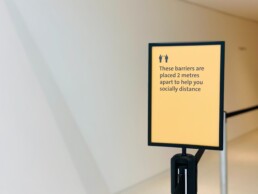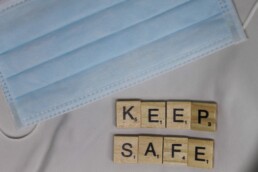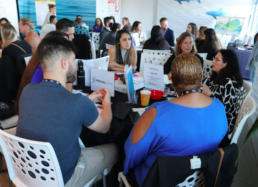Embracing Sustainability: Key Practices for Event Planners
By adopting a range of strategies, planners can significantly reduce the environmental impact of events while promoting social responsibility and fostering attendee engagement.
Conducting thorough assessments of resource needs allows planners to minimize waste and optimize efficiency. From utilizing digital communication systems to promoting recycling and waste reduction initiatives, implementing sustainable materials and practices can substantially decrease an event's environmental footprint.
Responsible energy consumption emerges as another critical focus area. Event planners are encouraged to explore renewable energy options such as solar or wind power to minimize reliance on fossil fuels. Additionally, optimizing lighting, HVAC systems, and equipment efficiency, as well as encouraging attendees to utilize sustainable transportation options, contribute to reducing carbon emissions associated with the event.
Social Responsibility
Social responsibility is an integral part of sustainable event planning. Prioritizing inclusivity and accessibility ensures equal participation opportunities for all attendees, including those with disabilities. Sourcing local goods and services not only supports the local economy but also reduces the carbon footprint associated with transportation.
Engaging attendees and stakeholders is a powerful strategy discussed in the article. By educating participants about sustainability goals and involving them in interactive exhibits, workshops, and networking sessions, event planners can foster a collective sense of responsibility. Such engagement enables attendees to become advocates for sustainable practices beyond the event itself.
Continuous Improvement
Measuring and reporting sustainability performance is a crucial step in driving continuous improvement. Setting measurable targets and regularly monitoring progress enables event planners to identify areas for enhancement and track the effectiveness of implemented strategies. Transparently sharing this information inspires others in the industry and encourages wider adoption of sustainable practices.
By embracing resource management, responsible energy consumption, social responsibility, attendee engagement, and performance measurement, planners can create impactful and environmentally friendly events.
These practices not only benefit the environment but also enhance the event experience while positively influencing attendees and the event industry as a whole.
Learn more about this topic on the Expo Pass website.
Using Art and Entertainment to Welcome Back Your Employees
Using Art and Entertainment to Welcome Back Your Employees
Many of us have traversed the rocky path of the last 8 months with tunnel vision, focused on the light up ahead that signals better days and a return to business as usual. However, we can acknowledge that this journey has not been without glimmers of light along the way, provided by virtual gatherings centered around art, music, and entertainment. The arts have both uplifted and grounded us during these trying times and continue to be the binding element that brings our communities together to tribute, network, and celebrate.
Live Art International hopes to continue this momentum by working with their clients to incorporate art and entertainment into their re-opening plans. Their visual approach to event branding is the perfect way for companies to energize employees and signal to the community that they are open for business. “We have 2 clients we are working with to design communal muralsâ€, notes CEO, Dayna Malow. “Companies are using the creation of art to signify a new beginning, with employees coming together at select times to each contribute to a unique mural being erected on site.†Music is also a cue that a celebration is in order. “ Gatherings that encourage dancing are still off the table, however, we are seeing some traction for our soloist and smaller ensembles, with adequate space allotment provided, so all can be at a safe and comfortable distanceâ€.
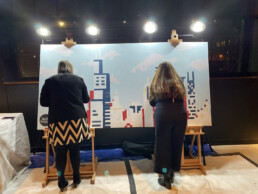
Covid precautions have also become a regular part of the coming celebration plans. “We have now adjusted our artist riders to request larger set-up space and accommodations for bands and musicians, and our art engagement experiences will account for disinfecting time and more disposable single-use materials.†says Malow, “We are helping our clients rethink their event structure, designing micro-activities where larger groups are sub-divided with participation occurring at scheduled times or multiple locations, allowing for social distancing. This approach is similar to the break out room activities we have all been participating in the last few months.â€
As for the coming months, and what the light at the end of the tunnel will mean for the entertainment industry in Chicago, Malow says, “Whatever your re-opening plans may be, we hope that companies will consider including art and music. The Chicago entertainment community will continue to struggle throughout the ramp up period. They have played an active role in providing inspiration and encouragement to get us to this point in time. Supporting entertainers and entertainment vendors allows them to survive another day and ensures that they will be here to provide the celebratory soundtrack when we are all truly back to business.â€
Brought to you by: Live Art International
How Hotels are Making it Safe for Tourism, Meetings & Events
Illinois Hotel & Lodging Association President and CEO, Michael Jacobson weighs in on the struggles the tourism industry has been facing since the pandemic hit. Jacobson expresses that hotels were the first to be affected and are potentially going to be the last to recover. Yet, he has hopes of “opportunity and optimism†in our industry.
Jacobson, Senior Vice President of Hyatt, Steven Enselein and General Manager of Embassy Suites By Hilton Chicago - Downtown, Kathy Heneghan discuss hotel safety protocols, the adaption to change and the future for events including hybrid. Back in April hotel occupancy in Chicago was at 22% and has slowly started to recover with the most recent rate of 39% in July.
In terms of hotel and event safety, Hilton has partnered with Lysol and Mayo Clinic to start CleanStay standards. A program that is dedicated to innovative solutions during COVID-19. It includes a cleaning protocol with a verified checklist, an “event-ready seal†put on every door, ensuring vendors are compliant with social distancing guidelines, flexible contracts, sanitation stations and a safer food & beverage experience for the guests and chefs by incorporating plexiglass.
In addition, Hyatt Hotels have also incorporated a comprehensive plan. They have partnered with the Cleveland Clinic and the Global Biorisk Advisory Council (GBAC) to create a safe experience from arrival to departure. It specifically targets what guests can expect and what changes they may face. Hyatt has provided mobile check in, a digital key, limited capacity in elevators, social distancing in restaurants, clear entrances & exits, and having the flexibility of choosing a time for housekeeping.“Communication is key and we want guests to feel comfortable and safe,†Enseilein stated.
Both hotels are focusing on proper training of staff for all protocols including issued masks, social distancing markers and signage around the lobby reminding guests and staff of the requirements. “Lead with Hospitality,†Hanaghen states, to remind guests to not only wear a mask, but to also remind them of why it’s needed.
If there is a silver lining to COVID-19, Enseilen says collaboration and working together has been seen more in this era than ever before, a hybrid component will only expand events and this an opportunity to remember why we meet face to face.
Managing Through Uncertainty
Uncertainty is inevitable, but leadership takes time. Michelle Mason, President & CEO of Association Forum, Kim Mosley, President of American Specialty Toy Retailing Association, and Kimberly Barnes, President and CEO of the Magnificent Mile Association, discuss their experiences of managing through uncertainty.
We have all reacted differently to the problems this pandemic has caused throughout the year. Mosley immediately jumped into action and knew she needed to create partnerships to make sure kids still had the chance to be kids this summer. Her organization worked with local schools to give toys during their food drives and worked with children museums to create packages filled with fun activities to keep kids occupied. Barnes also worked with her association to provide meals to communities who were severely hit by Covid-19.
While the pandemic has been a prevalent issue in the industry, the recent movement of racial injustice has sparked conversation everywhere. They welcome John Hockman, Principal of McKinley Advisors, to present key 2020 research findings concerning diversity and inclusion within the work environment. “44% of members said they have witnessed, experienced–or both–harassment, discrimmiation or bias in the last year,†said Hockman. He urges companies to diversify their leadership, raise awareness beyond just the basics, and to do something. Organizations may be at different points in their journeys, but no matter where they are, it is vital that they do something to advance welcoming environments.
Both Mosley and Bares are senior leaders in the industry, and want to lead by example. They have used their real life experiences to better understand their workers and to create a welcoming work environment for all. They are both advocates of self-care, and want to make sure their workers are taking care of themselves and not feeling overwhelmed. Barnes states it’s important that executives tell themselves “I need a break, I need to get this work done, but I also need to live to fight another dayâ€. A company can only thrive if they truly care about their workers in every sense.
COVID Safe Businesses & Events: How to Keep Your Guests & Employees Secure
How will the future of safety and cleanliness look as we move forward? Global Biorisk Advisory Council (GBAC) Executive Director Patricia Olinger, Hyatt Americas Vice President of Operations Tim Obert, United Service Companies CEO Rick Simon, and GBAC Director Dr. Gavin Macgregor-Skinner discuss the safety procedures that have been created to combat COVID-19.
Olinger highlights the purpose of the GBAC is to “prepare, respond and recover.†The GBAC was created between 2014 and 2015 due to the Ebola outbreak. Additionally, the current global pandemic has caused new realizations for the GBAC, “we have real concerns and critical shifts,†said Olinger. As a response to the outbreak, the GBAC has created the GBAC STAR accreditation program. This program is a guide to help facilities demonstrate that they can provide specific practices and protocols in combating a pandemic. “We need to be prepared for what’s next and move-on from hygienic cleaning to pandemic awareness,†said Olinger.Â
Hyatt Hotels are GBAC STAR credited world-wide. In addition to the GBAC STAR credit, Hyatt has started a Global Cleanliness program that has implemented training via the GBAC, a hygiene leader at each property, global face mask coverings, and ensuring every property is engaged in the accreditation program.
Dr.Macgregor-Skinner weighs in on the importance of GBAC STAR and explains that obtaining this type of accreditation has helped with the approval of local governments. “If your event is following the GBAC protocols, it becomes easier for the local government to give you the green-light to open,†he says.
There’s uncertainty of what will happen a month from now, but the point to be made is the importance of planning during these current situations. Dr. Macgregor-Skinner expresses that we all need a “peace of mind†and that we’re doing the best we can do.
Moving forward, we need to get excited when events start happening, but asking the crucial questions of ‘how do we operate to the highest standards?’ and ‘are we protecting our occupants and the buildings?’ Most importantly Dr. Skinner says, is to focus on the health and wellness of our guests and occupants to show that we care.
How Hotels Can Appeal to Meeting Planners
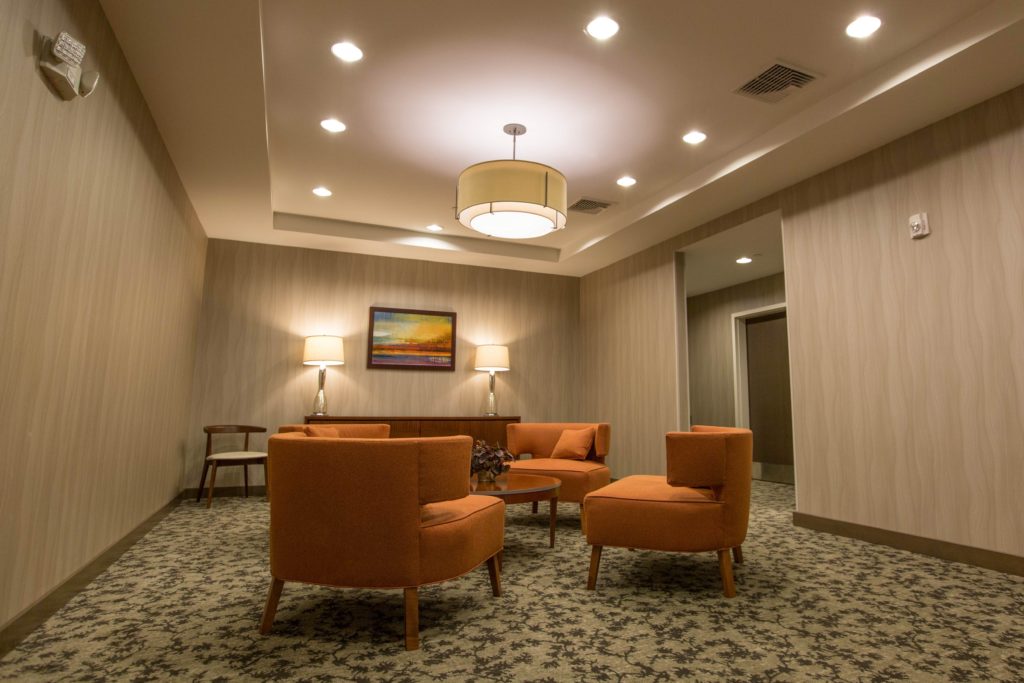
As the COVID-19 crisis continues and we adjust to this new normal, meeting planners are looking for spaces to safely host in-person events. In Lodging Magazine, VP of Product Development at Knowland Kristi White outlines what meeting planners want from hotels that are reopening.
Duty of care standards have a new level of importance to meeting planners than before. Whether a hotel has its own DOC standards or is following state regulations, these standards must be made clear to meeting planners. White emphasized that all hotel staff should be comfortable explaining these policies to guests and planners, and these policies should be easily accessible throughout the hotel and online.
Events are not going to be able to accommodate as many people as before, so as a hotel, it is important to follow local restrictions and requirements customers may have. “Prepare for a variety of options—whether six feet, seven feet, eight feet, or 12 feet of distancing,†White said.
Lower capacity in event spaces essentially means smaller events in larger spaces—potentially resulting in less revenue. White said it is important to work with the hotel’s revenue management team “to better understand how to price and optimize meeting space with the new social distancing guidelines.†A detailed plan for every scenario including room setup and number of rooms required will help sales teams sell events more seamlessly.
Self-serve buffets are not going to be seen at events in the near future, so hotels need to find ways to redesign banquet menus. In an article on Cvent, Megan Boley explains, “Seated dining could be an alternative option, if there are available staff members trained in sanitation and food-handling measures. These extra steps and layers of caution could tack on added cost to F&B, so it’s in the venues’ best interest to offer cost-effective solutions for food and beverage at events.†Pre-packaged meals and individually wrapped items are solutions to buffets, and White says these changes need to be clear in the hotel’s menu and pricing.
No matter what changes hotels make in preparing to host meetings, all changes and precautions must be clearly communicated to meeting planners and customers. Whether this be through email messages, a landing page, or creating an app for meeting planners and event attendees with safety information, all details should be easy to understand and access. White said creating an FAQ page and updating it as new questions come up is another effective way to communicate. It is just as important that sales teams are constantly updated on changes to effectively inform clients when selling events. As White said, “[planners] will want to book with hotels that have taken precautions and extra efforts to ensure their safety.â€
Hosting an event at your hotel may require more work than before, but luckily there are ways to safely and successfully host events at hotels during and beyond COVID-19.
Written By: Kelly Pawlak
Corporate Social Responsibility: The Power of Team-Building Events for a Good Cause
By Gavin Tolentino
It sounds like a desk-nap dream: You, bonding with coworkers as you make a difference in the world together, while your workplace and reputation in the community get better and better.Â
Not only is this possible, says Odyssey Teams, it's what they've been doing for companies for nearly 30 years, by facilitating team-building events with a socially responsible outcome. At the recent Planner Master Class at San Francisco's Aquarium by the Bay, the question was not whether Corporate Social Responsibility (CSR) works, but how to implement a CSR plan that maximizes mutual, lasting benefits to a workplace and its community.
Leading our roundtable was Kim Clary, Odyssey's Director of Client Success. She and more than 70 event professionals shared these Do's and Don'ts of a well-planned CSR event, and how to inspire staff participants in a life-changing way to strategically improve a company:Â
Do:
- Speak in depth: with participants to formulate your CSR plan. Understand what is personally meaningful to them, and identify a common, community-supportive purpose.
- Plan a multi-layered activity: to enable specific workplace improvements. Can merging departments use this opportunity to gel? Do you want to encourage leadership or teamwork with specific staff members? Or inspire a culture change or new awareness? Be deliberate when assigning tasks, teams, and seating.
- Get out of the office: Host the event in a business-neutral environment where office roles don't apply.
- Witness your work: Create a lifelong memory by interacting with the beneficiaries of your efforts. For example, if your team is building toys for children, have the children on-hand to receive the toys and play together with participants.
- Designate time to reflect: After the event ask participants to share their experiences and explore deeper meanings.
Don't:
- Simply "check the CSR box": A company may have a mandatory 'volunteer service day' with a pre-selected organization, or allow staff to participate in unrelated causes on their own. Although positive, this strategy misses out on the wealth of benefits a team-building CSR event can provide.
- Create a plan contingent on other factors: For example, "If we reach this financial goal, we will use the extra money to support a cause," or "If we complete this project ahead of schedule we will use the extra time to volunteer." Have an organized structure yielding guaranteed outcomes.
- Have beneficiaries witness the entire process: It's not always necessary to have community members or beneficiaries looking over the shoulders of staff participants. Their presence may potentially alter the team-building benefits of trial, error, and problem solving.
- Confuse corporate branding with community support: The perception between helping a community, and using a community to promote your company takes a delicate balance. Giving time and energy to a cause your participants genuinely care about will show.
Examples of successful CSR initiatives from attendees:
- A company had an employee whose child was disabled. The staff chose to help build an inclusive playground in their area, in conjunction with the Magical Bridge Foundation, and it is a source of inspiration and pride they hold dear.
- One of many workshops Odyssey Teams offer is called Helping Hands, where teams build prosthetic hands for people without the medical or financial means to acquire one. When participants see their prosthetic hands being used, there is a strong emotional connection they will always remember.
- A staff's mutual passion was music, so they partnered with a youth organization and spent a day creating fun, original songs with children. A contest was held to see which staff-child team was the best, with the winning child awarded their favorite instrument. At the end of the event, every child was surprised with an instrument of their choice, and the kids were overjoyed.
Numerous companies and studies have proven that a successful and righteous business can achieve a mythical reputation, because they have mastered the complicated trifecta of being profitable, having happy, productive employees, and doing something good for the world. Planning a CSR event based on team-building and good-will can help a company achieve these ever-fleeting goals.
Gavin owns an event production firm in San Francisco and has managed events in the Bay Area for 18 years.


